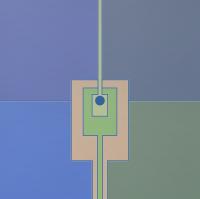Scientists at the National Institute of Standards and Technology (NIST) have designed a new ion trap featuring a built-in optical fiber. The ion trap accumulates the light transmitted by electrically charged atoms and enables the measurement of quantum information stored in the ions.
This methodology may help in exchanging the information between light and matter in future quantum networks and can simplify the design of quantum computer.
 NIST ion trap
NIST ion trap
In order to store information in quantum computing, NIST physicists utilized ions as quantum bits (qubits). The ion can be placed at a distance of 80 to 100 µm from the optical fiber. This optical fiber helps in detecting the ion’s fluorescence signals and determines the information content of the qubit.
Magnesium ions were used to demonstrate the new device. The light transmitted by the magnesium ion goes via a hole in an electrode. The light is then collected by the fiber, which is present beneath the electrode surface. Traditional ion traps, on the other hand, use huge lenses that are usefully positioned 5 cm away from the ions.
According to VanDevender, postdoctoral researcher at NIST, the optical fiber method is useful for identifying quantum information because the ions generate millions of bright light particles (photons) per second.
The physicists are planning to shape the fiber tip and use anti-reflective coating on the surfaces to enhance its efficiency.